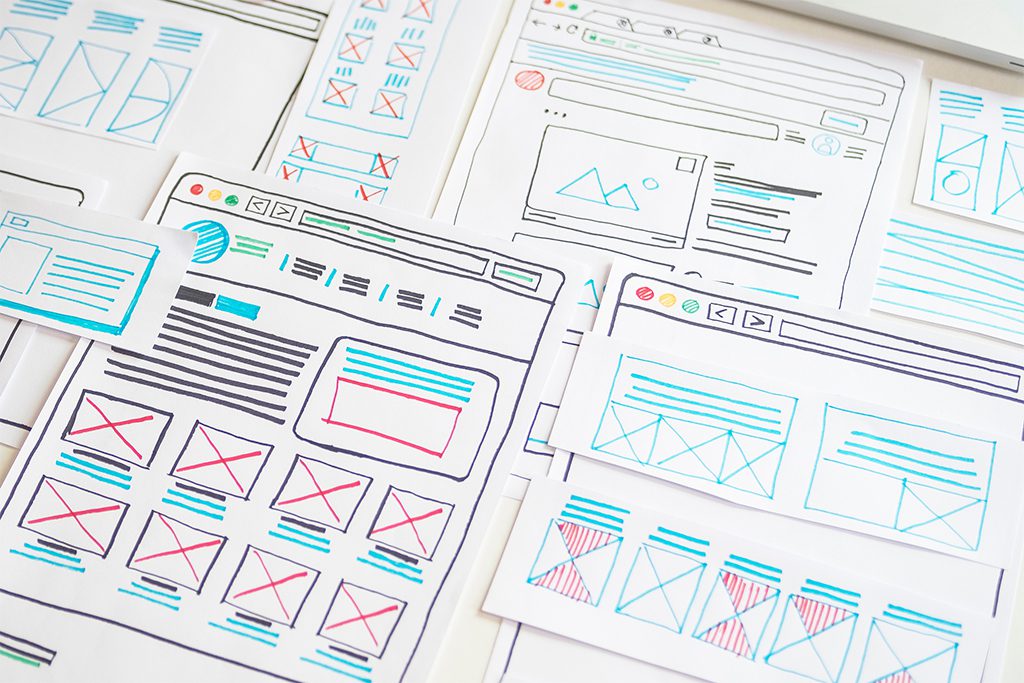Atlanta Web Design Blog

Five Steps to Expect in the Web Design and Development Process
Have you ever asked a web developer how, exactly, a website is built? Often times, you’ll get a
response in what sounds like a different language; and in a sense, it is. There are many “languages”
involved in web development and design, and while fluency in these languages is second-nature to
Airtight employees, we understand that it doesn’t come easily to everyone. Instead of giving you
definitions of every element involved in your site’s design and development, we’ve outlined the 5 main
steps involved in the build process.
1 . Organize
Before your web development team can begin building your site, you must work together to organize
the site content by creating a site outline. Usually, your web development company should provide you
with an outline that you can either approve or make recommendations on. It is important to create a
logical and user-friendly outline because it will determine your site visitors’s ease of navigation.
We always recommend that if you are planning on optimizing your site for search engines, it is best for
you or your web development company to preform the SEO research during the organization period so
you can base your site’s structure around your findings.
2. Design
The next step in the build process will determine how your site visitor will perceive your website. You
will work with your graphic designer to choose colors, fonts, and images to determine the look of your
site. If you are hiring your web development company to do copywriting work, this is when you will
need to determine the tone of voice that you wish your website to have as well. It is very important to
determine who your target audience is for your site, and consider what they would like to see.
After you have discussed the design details, your designer should provide you with a mock-up of the
layout of your site. Keep in mind, that the mockup may have to go through a couple rounds of revisions
in order for your vision of your site to align with your designer’s vision of your site.
3. Develop
The actual building of your site requires an experienced developer or team of developers. Your
developers need to be comfortable working with scripting languages, as this is determines the
functionality of your site. At this point, your developer will create the pages of your site and insert your
graphics, content, and any forms or additional page elements. Your project manager should be in
regular contact with you to answer any questions you may have about the progression of your website.
After your developer has created your site, your web development company should preform a quality
assurance check. Your developer should test your site to ensure that displays correctly on all operating
systems and in different browsers, and that there are no broken links or missing content. You should
also make a point to do a comprehensive check of your site before the launch date, and let your project
manager know of any changes or corrections that you find.
4. Launch
After your changes have been confirmed and you have given your final approval of the site, it is time to
release your site into the cyber world. Prior to the launch of your site, your web development company
should submit your URL to at least one search engine to promote your site. Your developer should then
upload your site to your server and do another check to ensure everything was uploaded correctly.
If you included a press release tool, you should write a press release announcing your new site. After
your launch, you need to think of your target audience and determine the most effective way to spread
the news of your site launch with them.
5. Maintain
Your web development company should have created a user-friendly content management system
(CMS) for you to maintain your site. If the CMS your web developer implemented is not user-intuitive,
be sure you or one of your employees gets a training session and fully understands how to use it.
In order to remain relevant to your site visitors, you need to be able to update any content on your site
that changes frequently.
If you chose to incorporate a blog, be sure to update it regularly. A site visitor may question the
relevance of the material on your entire site if you have no updated your blog in months, or even years.
If you find that you can’t keep up the commitment of blogging, call your web development company
and see if you can hide that page until you have the time to maintain it regularly.
Have a project you’d like to discuss?
Fill out the form below and let’s have a conversation.


